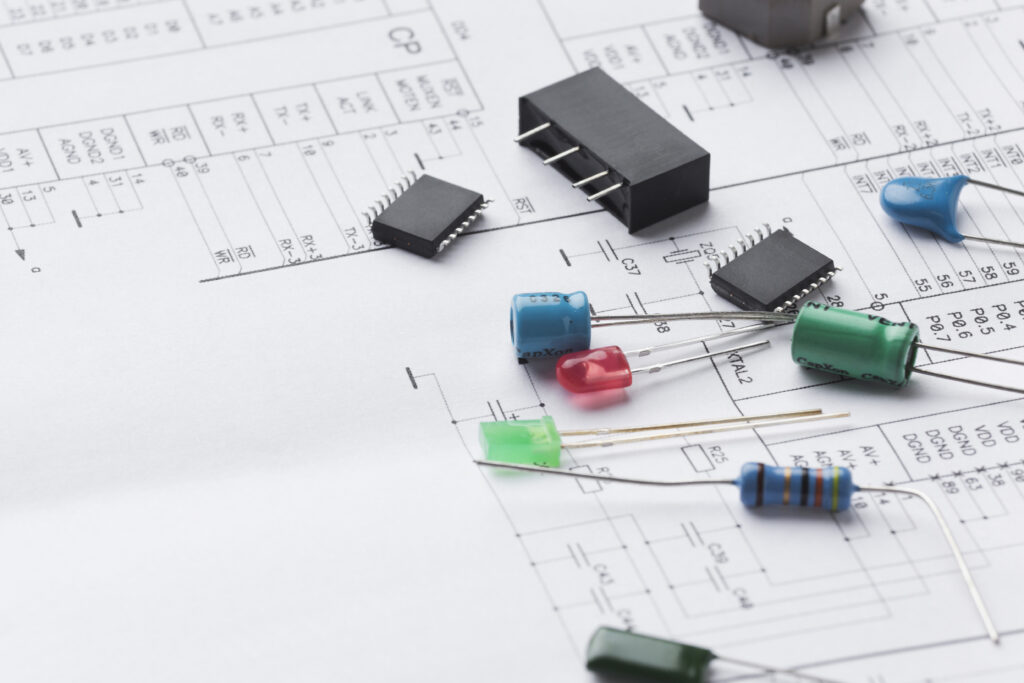Empowering India’s Electronic Component Manufacturers: A Strong Focus
Focus on Empowering India’s Electronic Component Manufacturers India’s economy is rapidly growing, and the government’s goal is to reach a $5 trillion economy by 2025. The startup ecosystem is thriving, with immense energy devoted to innovation, making it the fastest-growing ecosystem in the world. India has undergone significant reforms to simplify doing business. Indirect tax […]

Focus on Empowering India’s Electronic Component Manufacturers
India’s economy is rapidly growing, and the government’s goal is to reach a $5 trillion economy by 2025.

The startup ecosystem is thriving, with immense energy devoted to innovation, making it the fastest-growing ecosystem in the world.
India has undergone significant reforms to simplify doing business. Indirect tax reforms, such as converging over 40 indirect taxes and cess to one common GST, have helped streamline the system.
As a result, India is now ranked 63rd in the world in the ease of doing business.
The country has tremendous potential in industrial electronics, including Industry 4.0, automotive, mobile phones, and more. The government has taken initiatives to boost electronics manufacturing in India.
The production-linked clusters (PLI) and capex-linked incentives (CLI) schemes have been launched to support the growth of the electronics industry.
India is on the verge of becoming a global hub for electronics manufacturing. The development of electronics manufacturing clusters and the announcement of the schemes mentioned above will help to achieve this goal.
Additional $5 billion is likely to be announced for IoT devices and wearables, semiconductor fabs, display fabs, and domestic fabless product companies.
The growth in data consumption is remarkable, with a 93X increase in data usage. Additionally, the mobile data price has decreased by 99 percent, making internet access affordable for the masses. These factors have contributed significantly to the digital revolution in India.
India’s growth trajectory is impressive, with a clear vision to reach a $5 trillion economy by 2025.
The country’s vast digital infrastructure and the thriving startup ecosystem provide fertile ground for innovation and growth.
With significant reforms in place to simplify doing business, coupled with initiatives to boost electronics manufacturing and support allied services, India is well-positioned to become a global leader in electronics.
India has been making great strides in the electronics industry in recent years. With the Indian government’s push towards digitalization and the Make in India initiative, the electronics sector has become a vital part of the country’s economy.
The electronics industry is expected to become a $400 billion industry in India by 2025, making it one of the fastest-growing industries in the country.
However, to achieve this, India needs to focus on empowering its electronic component manufacturers.
Electronic component manufacturers play a crucial role in the electronics industry. These manufacturers produce the components that are used in electronic devices such as smartphones, laptops, televisions, and more.
Without these electronic components, electronic devices would not function. Hence, it is essential to empower electronic component manufacturers in India to help them grow and contribute to the country’s economy.
Ways in which India can empower its electronic component manufacturers:

Providing Access to Capital
Access to capital is a major challenge for electronic component manufacturers in India. Most of these manufacturers are small and medium-sized enterprises (SMEs) that face difficulty in securing loans from banks due to their limited financial resources.
To overcome this challenge, the government can set up a dedicated fund for electronic component manufacturers.
This fund can provide low-interest loans to SMEs, enabling them to invest in research and development, expand their operations, and upgrade their equipment.
Encouraging Innovation
Innovation is the key to success in the electronics industry. Electronic component manufacturers need to continuously innovate to keep up with changing technology and consumer demands.
The Indian government can encourage innovation by providing tax incentives and other benefits to companies that invest in research and development.
This will motivate electronic component manufacturers to come up with new and innovative products that can help India compete globally.
Providing Skill Development Training
Electronic component manufacturing requires specialized skills, including knowledge of electronics, mechanical engineering, and computer science.
Many workers in this industry do not have the necessary skills, leading to a shortage of skilled labor.
The government can address this by providing skill development training to workers in the electronics industry. This will not only help the workers but also boost the quality of electronic components produced in India.
Promoting Collaboration
Collaboration between electronic component manufacturers can lead to the development of new products and technologies.
The Indian government can facilitate collaboration by setting up a platform where manufacturers can exchange ideas and collaborate on research and development projects.
This will create a culture of innovation and help electronic component manufacturers in India stay ahead of the curve.
Fostering a Supportive Ecosystem
To empower electronic component manufacturers, India needs to create a supportive ecosystem that encourages entrepreneurship and innovation. This can be done by providing tax incentives, reducing bureaucratic red tape, and simplifying regulations.
Additionally, the government can set up incubation centers and provide funding for startups in the electronics industry. Empowering electronic component manufacturers in India is crucial for the growth of the electronics industry.
By providing access to capital, encouraging innovation, providing skill development training, promoting collaboration, and fostering a supportive ecosystem, India can create a thriving electronics industry that can compete globally.
This, in turn, will create job opportunities, boost economic growth, and help India become a global leader in the electronics industry.

